Abstract
Graber, C. D. (Baylor University College of Medicine, Houston, Tex.), R. M. O'Neal, and E. R. Rabin. Effect of high fat diets on intestinal microflora and serum cholesterol in rats. J. Bacteriol. 89:47–51. 1965.—Differential bacterial counts of feces and total plasma cholesterol determinations were performed on 60 Wistar rats fed several high lipid diets for a period of approximately 6 months. Fecal flora remained relatively stable irrespective of diet, but cholesterol levels rose in animals fed butter and sodium cholate. The six most commonly cultured organisms in all diets were enterococci, Proteus, lactobacilli, Escherichia coli, Staphylococcus aureus, and other micrococci. No enteric pathogens which did not ferment lactose or fermented it slowly were grown. Fungi and yeasts were rare. Aerobes generally outnumbered anaerobes in proportions which were sometimes as high as 300:1. Clostridium perfringens isolations were consistently high in animals given the butter diets, particularly when sodium cholate was added. Evidence is reviewed which indicates that this organism may play a role in bile salt and cholesterol metabolism. This experiment would seem to demonstrate that differences in plasma-cholesterol levels among the various dietary groups of rats were the result of dietary factors rather than alteration in intestinal flora.
Full text
PDF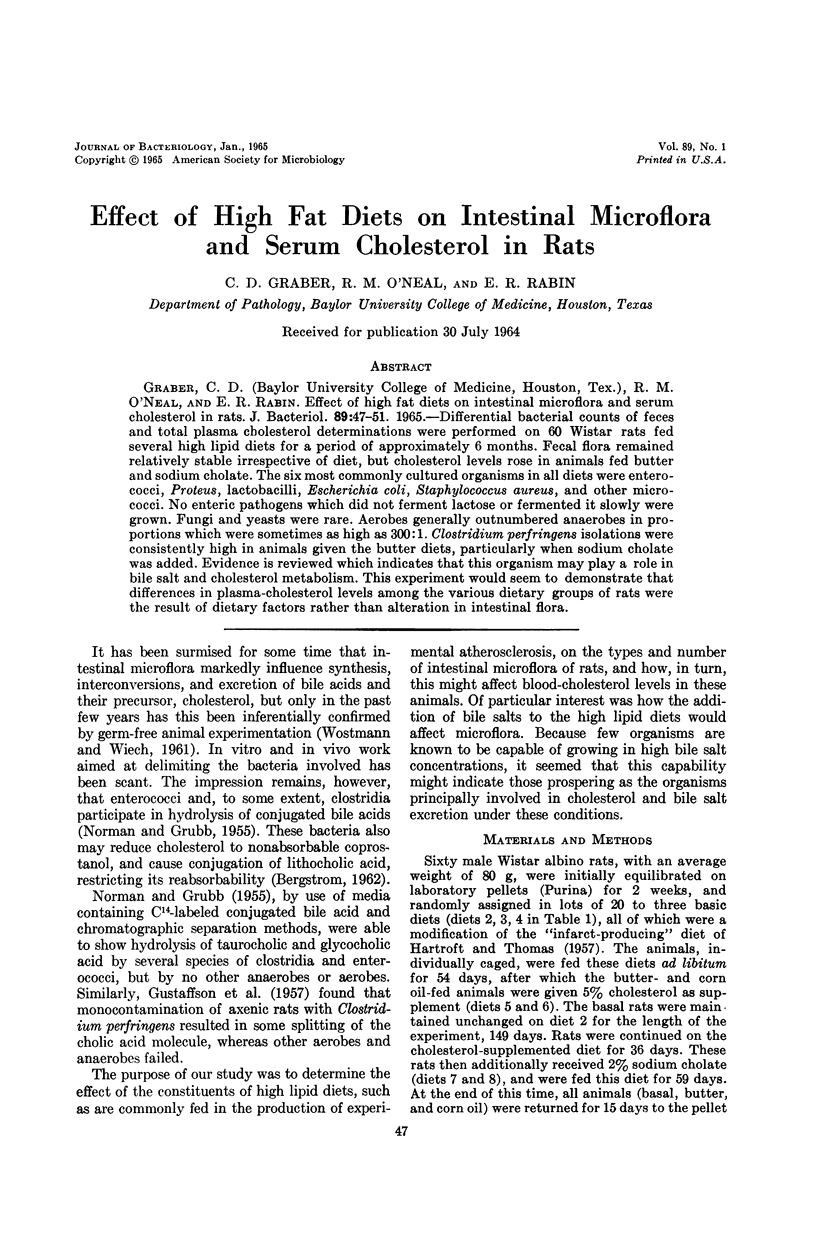
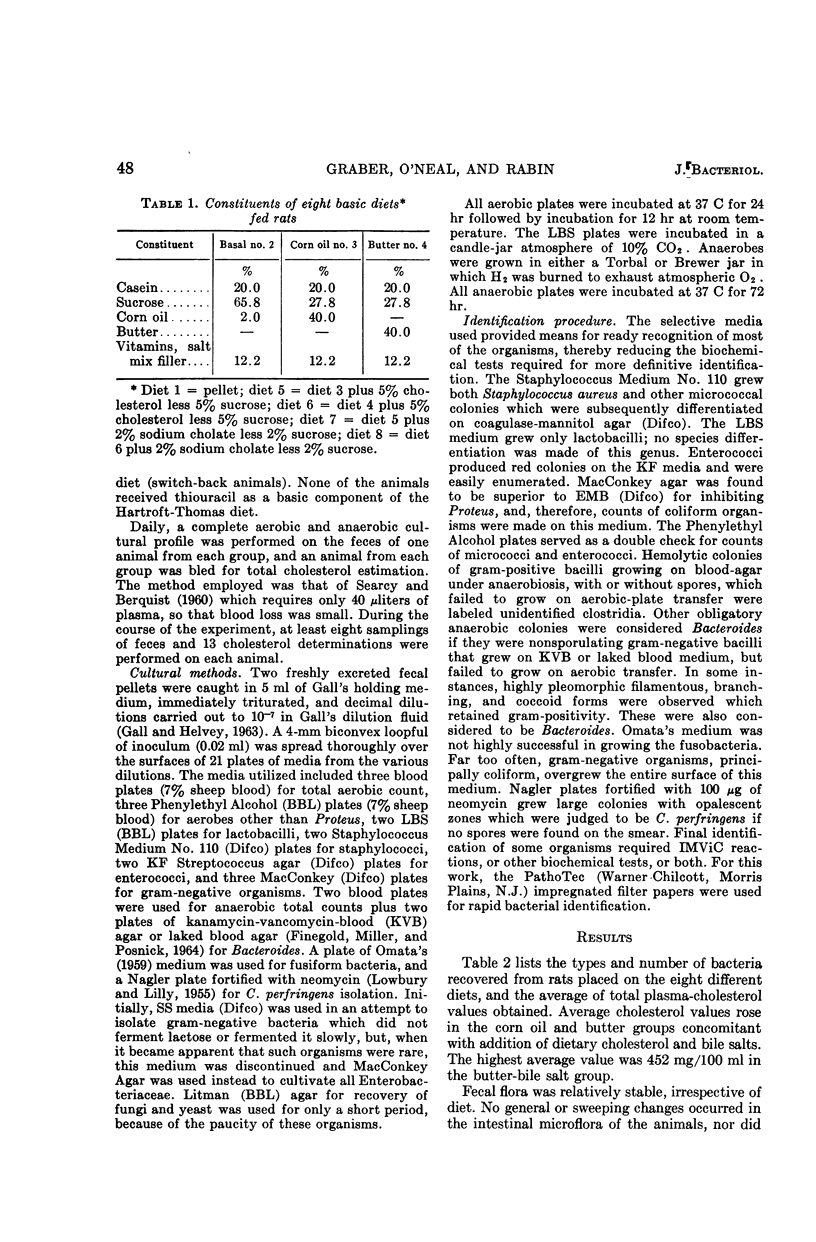
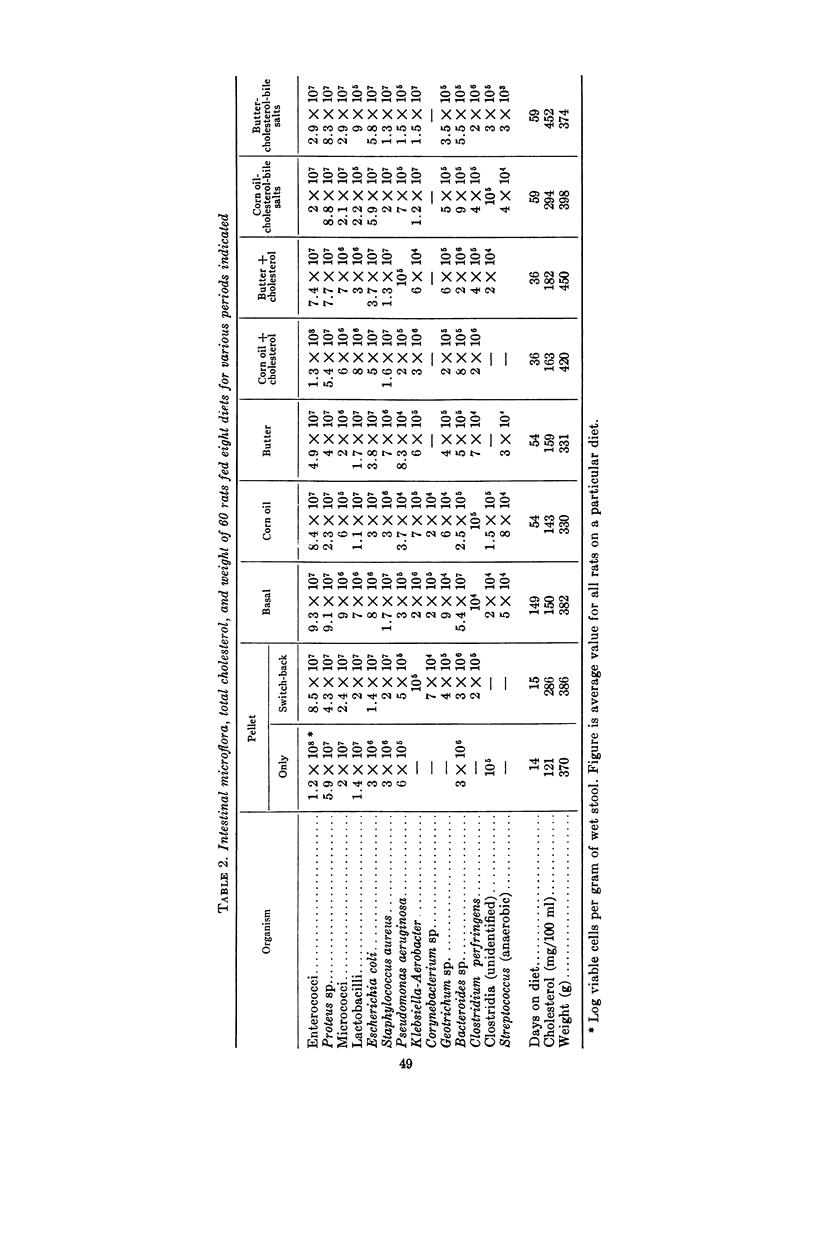
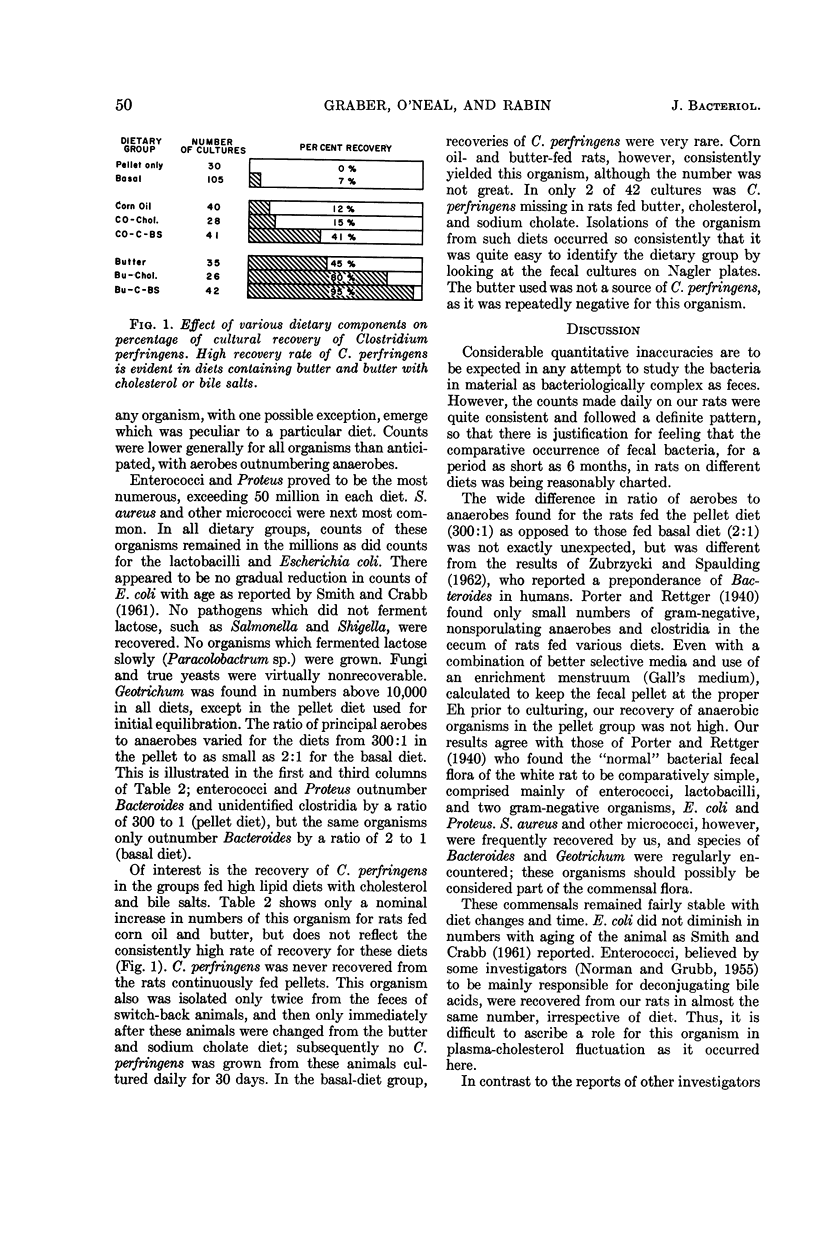
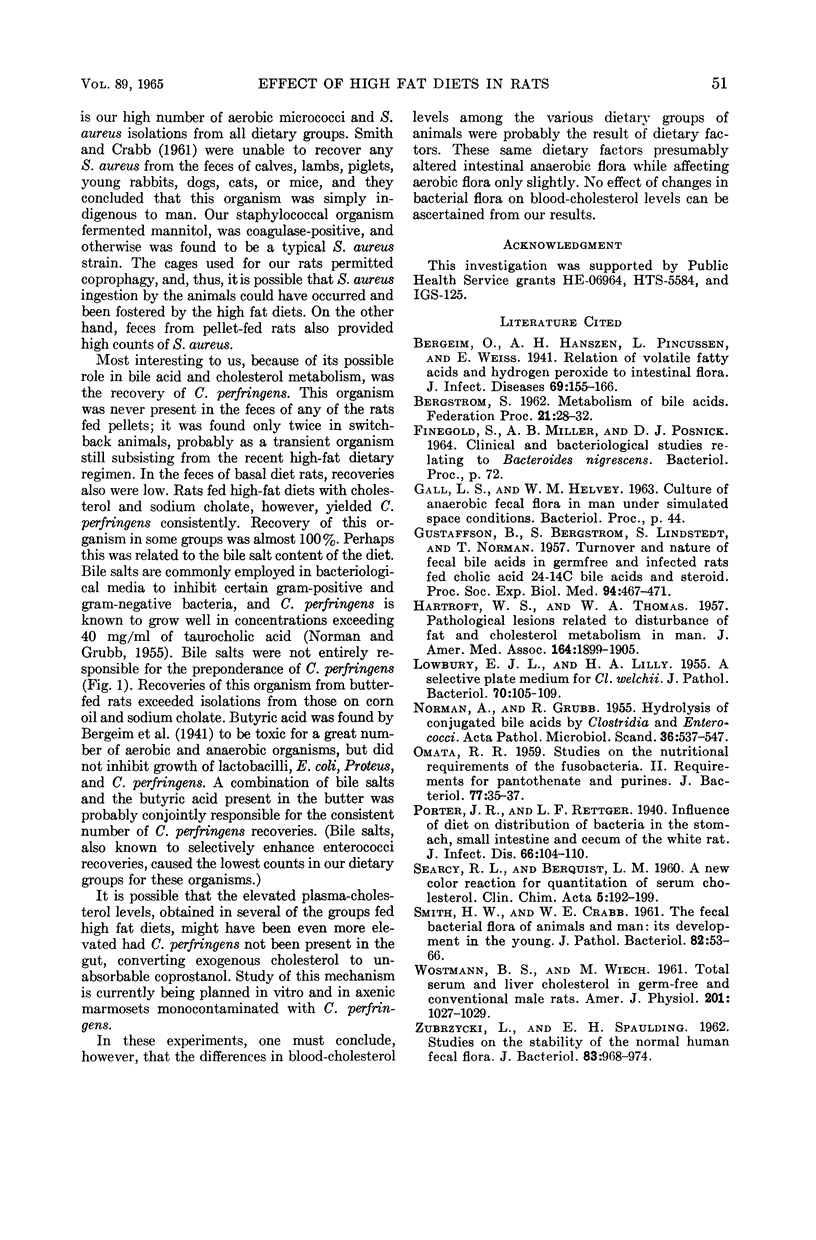
Selected References
These references are in PubMed. This may not be the complete list of references from this article.
- GUSTAFSSON B. E., BERGSTROM S., LINDSTEDT S., NORMAN A. Turnover and nature of fecal bile acids in germfree and infected rats fed cholic acid-24-14C; bile acids and steroids 41. Proc Soc Exp Biol Med. 1957 Mar;94(3):467–471. doi: 10.3181/00379727-94-22981. [DOI] [PubMed] [Google Scholar]
- HARTROFT W. S., THOMAS W. A. Pathological lesions related to disturbances of fat and cholesterol metabolism in man. J Am Med Assoc. 1957 Aug 24;164(17):1899–1905. doi: 10.1001/jama.1957.62980170011007c. [DOI] [PubMed] [Google Scholar]
- LOWBURY E. J., LILLY H. A. A selective plate medium for Cl. welchii. J Pathol Bacteriol. 1955 Jul;70(1):105–109. doi: 10.1002/path.1700700110. [DOI] [PubMed] [Google Scholar]
- NORMAN A., GRUBB R. Hydrolysis of conjugated bile acids by Clostridia and enterococci; bile acids and steroids 25. Acta Pathol Microbiol Scand. 1955;36(6):537–547. doi: 10.1111/j.1699-0463.1955.tb04651.x. [DOI] [PubMed] [Google Scholar]
- OMATA R. R. Studies on the nutritional requirements of the fusobacteria. II. Requirements for pantothenate and purines. J Bacteriol. 1959 Jan;77(1):35–37. doi: 10.1128/jb.77.1.35-37.1959. [DOI] [PMC free article] [PubMed] [Google Scholar]
- SEARCY R. L., BERGQUIST L. M. A new color reaction for the quantitation of serum cholesterol. Clin Chim Acta. 1960 Mar;5:192–199. doi: 10.1016/0009-8981(60)90035-8. [DOI] [PubMed] [Google Scholar]
- WOSTMANN B. S., WIECH N. L. Total serum and liver cholesterol in germfree and conventional male rats. Am J Physiol. 1961 Dec;201:1027–1029. doi: 10.1152/ajplegacy.1961.201.6.1027. [DOI] [PubMed] [Google Scholar]
- Zubrzycki L., Spaulding E. H. STUDIES ON THE STABILITY OF THE NORMAL HUMAN FECAL FLORA. J Bacteriol. 1962 May;83(5):968–974. doi: 10.1128/jb.83.5.968-974.1962. [DOI] [PMC free article] [PubMed] [Google Scholar]


